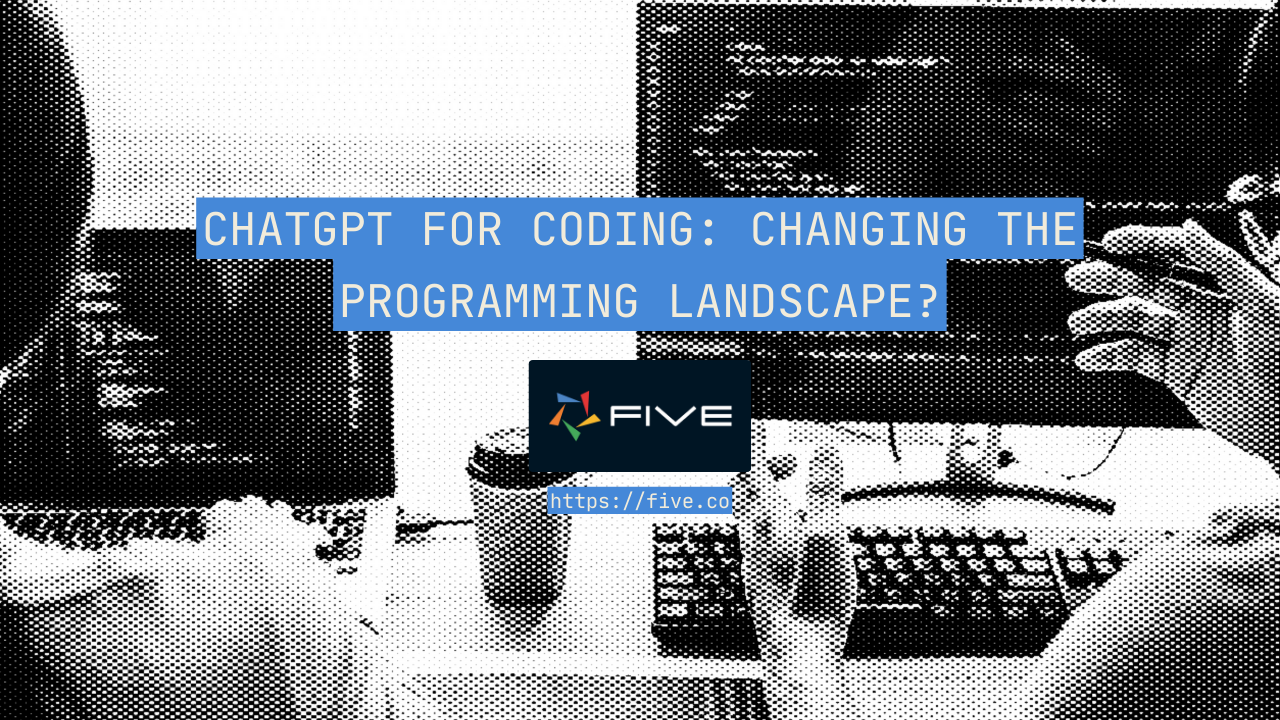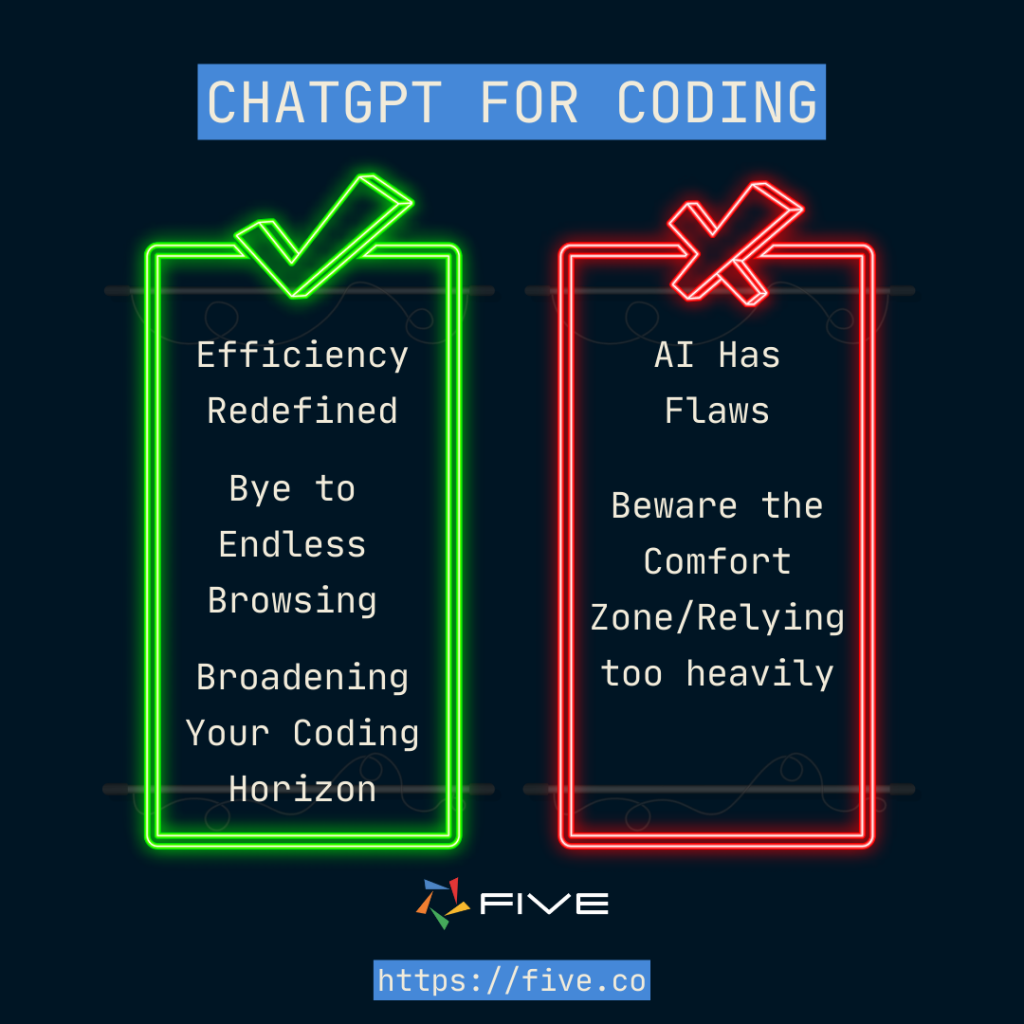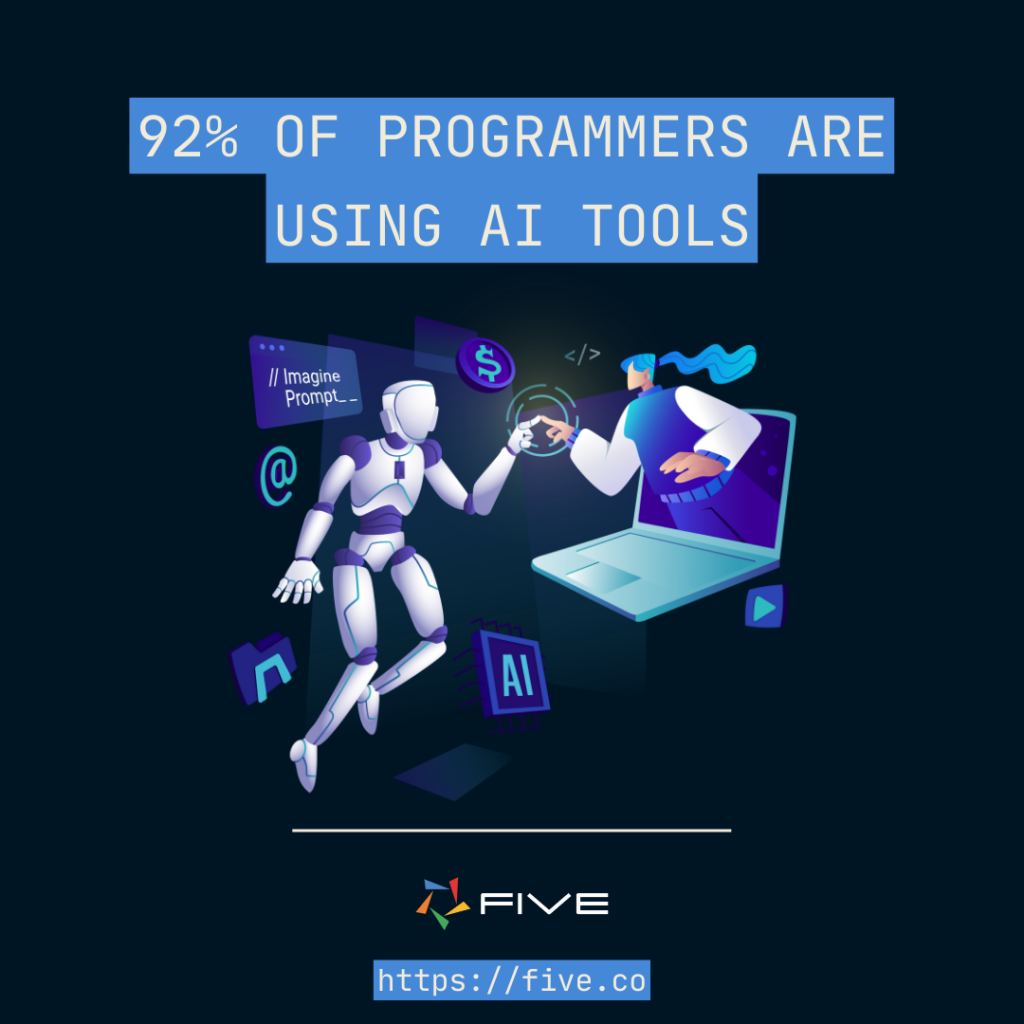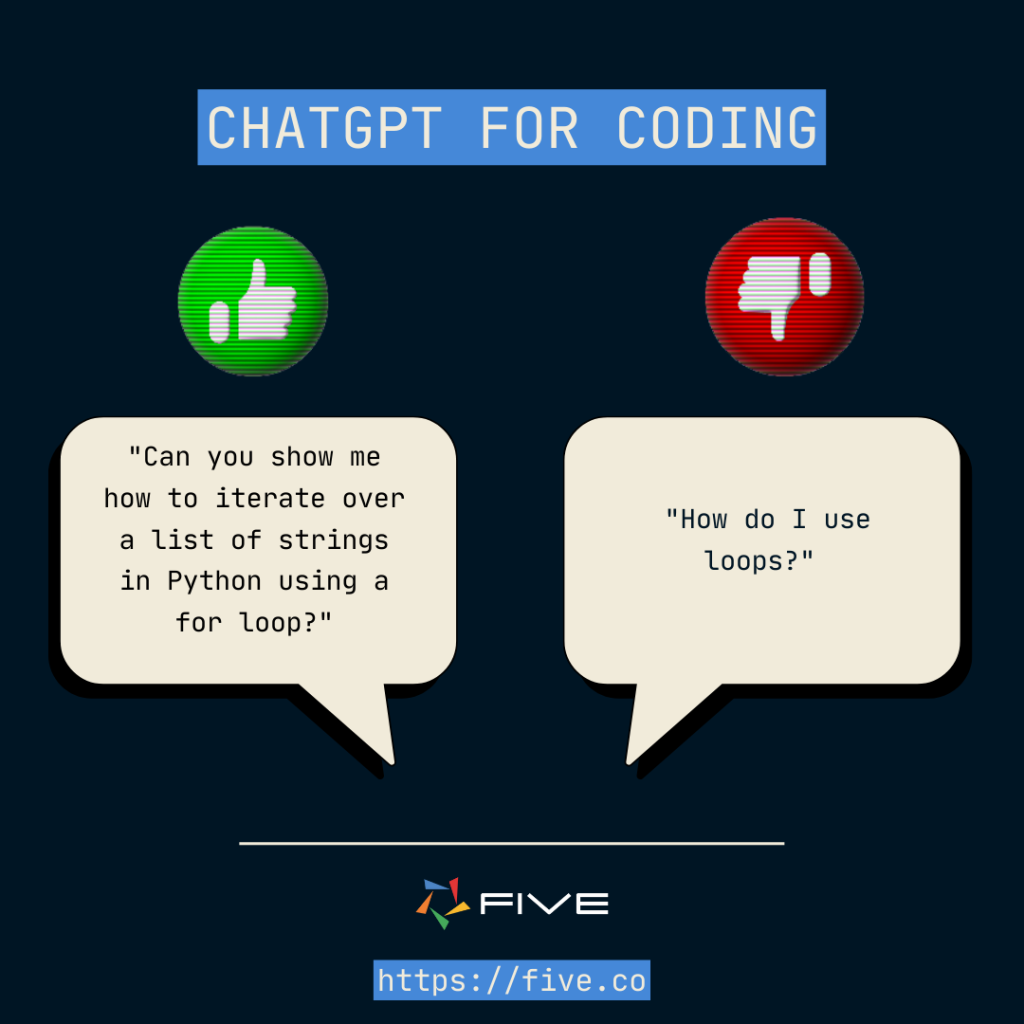ChatGPT for Coding: Changing The Programming Landscape?

Should you be using ChatGPT for coding?
In today’s world, you can’t escape the buzz about artificial intelligence – AI seems to be everywhere. But amidst this tech wave, coding emerges as a particularly exciting field ripe for innovation. The phrase “ChatGPT for coding” has started to pop up more and more. But what does it mean? And why should anyone in the world of programming care about ChatGPT? Let’s take a closer look.
Table of Contents
The Story Behind ChatGPT for Coding:
Language models have always been about more than just tech jargon and big data. At their heart, they’ve been driven by a dream to make computers understand and speak our language. In the beginning, these models played with basic human language patterns, trying to echo back what they heard. But soon, they began experimenting in the vast world of coding, hinting at solutions or even suggesting whole sections of code.
The phrase “ChatGPT for coding” has started to pop up more and more. But why should anyone in the world of programming care?
– Read More to Find Out
When we hear “AI and coding” or “ChatGPT for coding,” many of us might picture a computer simply answering our coding queries or offering minor help. However, ChatGPT-4 and the Code Interpreter plugin take this partnership to the next level. It’s not just about replying to questions. ChatGPT dives deep into creating code from the ground up, demystifying complex parts, and streamlining what’s already there. Sure, ChatGPT-4 shines in many programming languages, but like any tool, it has its days of triumph and its occasional hiccups.
The Two Sides of the Coin
A Deeper Dive into the ChatGPT Experience
Benefits of Weaving ChatGPT into the Developer’s Day-to-Day:
- Efficiency Redefined: With ChatGPT by your side, those mundane, repetitive tasks can be executed in a fraction of the time, letting you focus on the bigger picture.
- Goodbye to Endless Browsing: Those countless tabs of StackOverflow searches? They might become a thing of the past as ChatGPT can serve up solutions right from your interface.
- Broadening Your Coding Horizon: Stuck in a coding rut? ChatGPT introduces you to varied coding methods and practices, nudging you gently out of your comfort zone and into a world of expansive possibilities.
But, Tread with Caution:
- A Friendly Reminder – AI isn’t Flawless: No matter how sophisticated, AI-driven code needs the human touch. A glance, a review, a thorough check. Remember, it’s a partnership.
- Beware the Comfort Zone: Relying too heavily on ChatGPT can be a double-edged sword. From potential security hiccups to inadvertently muting one’s own creative instincts, a fine balance is essential.

At the end of the day, like any powerful tool, ChatGPT’s efficacy hinges on the hands that wield it. Embrace its potential, but tread with caution.
Beyond Code Generation: Charting New Territories with ChatGPT
While generating code might be a significant facet of ChatGPT’s utility, its capabilities stretch far beyond that.
A Second Pair of Digital Eyes
Even the most seasoned developers occasionally find themselves stumped by an error message or a particularly obstinate piece of code. Here, ChatGPT can serve as a valuable debugger, offering a fresh, second opinion on where things might have gone awry.
To utilise AI debugging for application development – try Five
A Muse for the Modern Developer
Beyond problem-solving, the realm of creation and ideation is where AI truly shines. Developers can harness ChatGPT for brainstorming sessions, leveraging its vast knowledge base to inspire new projects or innovative solutions to existing challenges. In a sense, it acts as a digital muse, prodding and guiding the creative process in different directions.

The Ethical Quandary: Will AI Replace the Developer?
The rise of artificial intelligence, particularly in fields traditionally dominated by humans, has brought a range of reactions. From excitement and wonder to genuine concern, one question that looms large is: Will AI, like ChatGPT, overshadow or even replace the role of the developer?
Human Creativity: An Unparalleled Force
Before jumping to conclusions, it’s essential to understand the boundaries of AI. While AI can analyze vast datasets, generate code, and even debug in milliseconds, there remains a realm it cannot access: the intricate world of human creativity. Each developer brings a unique blend of experiences, intuition, and innovation to their work. These elements are shaped by social, and personal histories, and they culminate in coding solutions and approaches that are as diverse and unique. This nuance of human creativity ensures that developers have a touch and perspective that machines, no matter how advanced, cannot replicate.
Collaboration, Not Competition: The Road Ahead
Instead of viewing the advent of AI tools like ChatGPT as competitors, it’s far more constructive to see them as invaluable allies. Just as calculators didn’t render mathematicians obsolete but instead enhanced their capabilities, AI in coding aims to streamline the developer’s workflow, tackle repetitive tasks, and provide insights drawn from expansive data. If developers use tools like ChatGPT for coding they can focus on higher-order problem solving, innovation, and areas where the human touch is critical.
Envision a scenario where a developer, faced with a challenging problem, consults with ChatGPT, leveraging its vast knowledge base for a solution, then fine-tunes and adapts that solution based on their unique perspective and understanding of the problem at hand.
Check this article for an in-depth discussion on AI pair programmers and their impact on developer productivity
Fun Fact: Surprisingly, ChatGPT “had the highest success rate among the evaluated code generation tools”: “It was able to generate correct code solutions for 65.2% of the problems in the HumanEval problem dataset”, compared to 46.3% and 31.1% for Copilot and CodeWhisperer respectively
Source
Understanding the Code Interpreter in ChatGPT: A Quick Guide
Now let’s dive into Open AI’s Code Interpreter plugin, specifically tailored for the GPT-4 model. In essence, it transforms ChatGPT into a live, sandboxed Python playground. Not just for seasoned developers, even those less tech-savvy can harness its versatility for a range of tasks.
Key Features:
- Diverse Functions: Beyond conventional coding, with the Code Interpreter, tasks such as converting PDFs using OCR, editing video files, performing data analytics, and generating visual representations like graphs and charts become accessible directly within ChatGPT.
- File Flexibility: Users are provided temporary disk space to upload various files. The Interpreter is versatile, compatible with a broad spectrum of file formats, ranging from common ones like TXT, PDF, and JPEG to more specialized types like SQLite and CPP. For a comprehensive list, one can refer to a detailed tweet on the subject.
- An In-chat PC Experience: Essentially, the Code Interpreter offers users a virtual computer nestled within the chat interface. It’s equipped with ample computational resources and storage. However, it’s worth noting that while it boasts over 300 pre-installed libraries, users can’t add any new Python libraries.
How It Functions:
The Code Interpreter seamlessly crafts custom Python scripts in response to user requests. For instance, upon asking it to render an image-based PDF searchable via OCR, it instantaneously develops and runs the requisite Python code. All one has to do is provide the necessary file. Moreover, while the official file size limits remain unspecified, uploads even up to 170MB have been successful. Yet, it’s crucial to remember that any uploaded file will be automatically deleted post-chat.
Access and Availability:
Currently, this feature is exclusive to ChatGPT Plus subscribers at a monthly fee of $20. Those eager to explore it further can refer to an in-depth tutorial on maximizing the Code Interpreter’s potential within ChatGPT.
Crafting Effective Queries: Getting the Most Out of ChatGPT

As with any sophisticated tool, especially when using ChatGPT for coding, the results you obtain depend largely on how you interact with it. Your queries are the bridge that connects you to a wealth of coding insights. But how do you frame these queries effectively?
The Art of Precise Prompting
At the core of a productive interaction with ChatGPT is the precision of your prompt. Here are a few guidelines to ensure your prompts are sharp and effective:
- Be Specific: General queries will give you general answers. If you’re facing a problem with a particular line of code, provide context. The more specific you are, the better suited the response will be to your needs.
- Iterative Questioning: If you’re unsure about how to frame a question or if the response isn’t quite what you expected, break your query down. Ask step-by-step or layer your questions to refine the results.
- Use Technical Language When Needed: ChatGPT understands technical jargon. If you’re familiar with the terminologies, use them. It can make the distinction between a broad overview and a detailed, technical response.
Examples for Optimized Results
To help cement these tips, let’s delve into some examples:
- General Query: “How do I use loops in Python?”
- Optimized Query: “Can you show me how to iterate over a list of strings in Python using a for loop?”
- General Query: “What’s an SQL injection?”
- Optimized Query: “How can I prevent SQL injection attacks in a PHP-based web application?”
- General Query: “Help with CSS styling.”
- Optimized Query: “How can I vertically center text within a div using CSS?”
Using AI to Assist Application Building: Introducing Five
In the realm of application builders that harness AI’s capabilities, Five is one of the platforms that is effectively incorporating AI into the application development process.
Five simplifies web application development and integrates with OpenAI’s code interpretation and debugging tools. By simply adding their OpenAI API key to Five, developers gain access to an enhanced environment where AI actively scans for coding discrepancies and offers real-time solutions.
Five represents a new wave of development where platforms are incorporating state-of-the-art AI models like ChatGPT. It exemplifies how these models are reshaping the development process, making coding challenges a collaborative endeavor and significantly accelerating application development. Such platforms underline the synergy between AI and human creativity, where one complements the other, enhancing efficiency and innovation.
Simply add your Open AI API key to Five, and let AI check your code for errors and bugs, or let AI explain your code to you.
To see Five’s AI features in action, check out these two videos:
1. This video demonstrates how to explain code using AI in Five:
2. Here’s a video of how to use AI to check for errors in your JavaScript or TypeScript functions in Five:
Conclusion
By honing your queries, you not only save time but also get solutions that are immediately relevant. If you’re interested in further exploring the landscape of AI coding assistance, Five’s detailed review of the 3 best AI coding assistants provides an excellent overview.
Remember, when you use ChatGPT for coding, it becomes a vast reservoir of knowledge. The key to tapping into that effectively lies in your hands—or rather, your prompts.
As the world of technology spins faster, it’s comforting to know we’ve got tools like ChatGPT to help us keep pace. But it’s not just about speed or efficiency; it’s about connection. ChatGPT isn’t merely an algorithm, but rather a developer’s friend, always ready to lend a hand or offer a fresh perspective.
In our dynamic tech landscape, every coder knows the thrill of cracking a complex problem, as well as the frustration of hitting a wall. When you use ChatGPT for coding, those walls don’t seem quite as high. It’s like having a coffee chat with a fellow coder, anytime you need it.
Yet, as we move forward, let’s not forget the irreplaceable magic of human creativity. While ChatGPT is a fantastic companion, the heart and soul of innovation still lie within us.


